Demolition! The Larkin Administrative Building: 680 Seneca
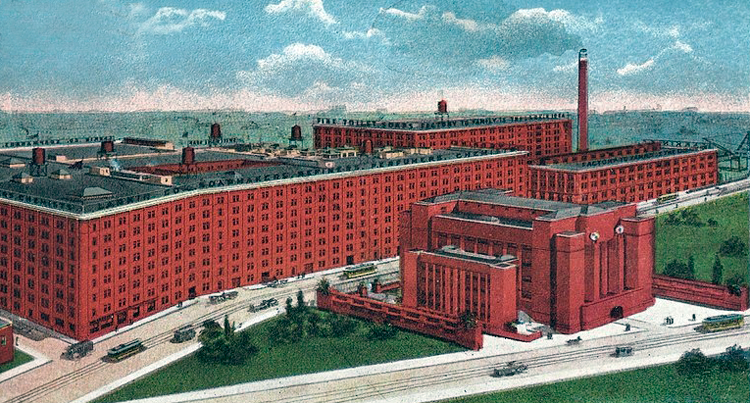
Bird's Eye View of the Larkin Complex, Administration Building left center. Image source: Internet

Seneca Street side of the Larkin Administration Building. Image source: TBHM
The Larkin Soap Company's successes in the 1890s led to a company building boom. In order to consolidate its office departments, John D. Larkin approved the hiring of Frank Lloyd Wright to design an administration building that would meet Larkin's desire for a humane working environment. It would be Wright's first large commercial project and, when completed in 1906, became a subject of much discussion and some criticism. The Larkin executives and office workers were very pleased with the structure which contained many employee amenities not found in other Buffalo companies at the time. The building, located in a heavily industrial neighborhood, was sealed off from the outside by an early form of air conditioning. It cost $4,000,000 to build ($95,797,920 in 2010 dollars).
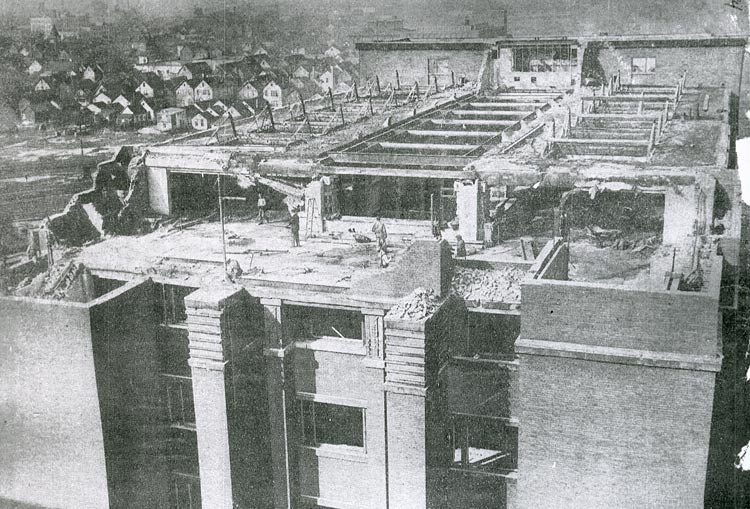
Early stages of the demolition, viewed from the factory on Seneca Street. Image source: Buffalo Evening News
The Larkin Company, as it became known when its mail order sales included over 1,000 products, peaked in the 1920s when the company's average yearly sales were $15.5 million. But numerous market factors were eroding the practice of mail order shopping by that time and the Depression blunted the attempts by John D. Larkin, Jr. to diversify and adapt. By 1942, the company was finished and the building sold to a Pennsylvania contractor who, it was later revealed, had hoped to use the building for tax purposes, to write off some business losses. The building remained vacant and the city eventually took ownership for back taxes in 1945. In 1946, a purchase offer was made for $25,000, but the city thought the figure too low. Six thousand dollars for advertisements in national newspapers brought no other offers. The state refused to accept the building even for storage of Selective Service records. Proposals by local residents were also futile.
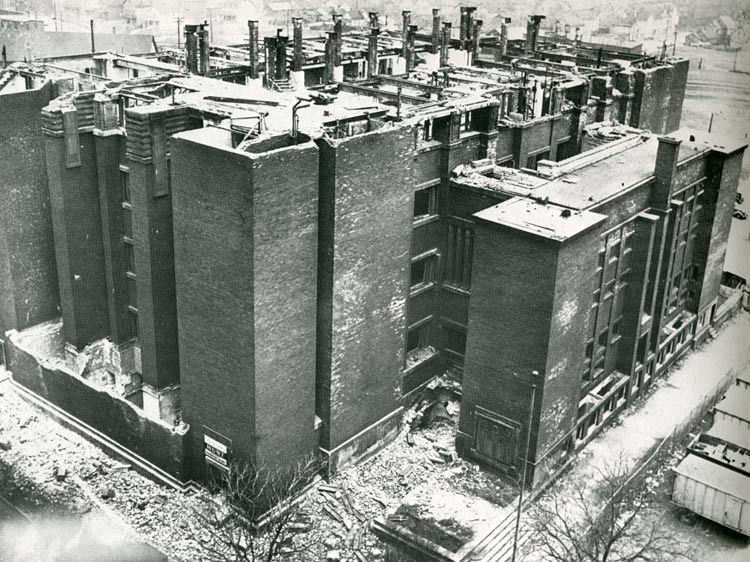
Aerial view of the demolition from the Swan Street side. Image source: TBHM
In 1947, the building was a wreck; it had been repeatedly vandalized. "Every double-paned window is shattered. The tall iron gate which graced the entrance has toppled from rusted hinges. The iron fence topping a low brick wall around the structure went into a wartime scrap collection." (Buffalo Evening News) Twenty tons of copper plumbing and roofing were stolen along with anything else that might have value. Children played among the ruins. In 1949, it was sold to a trucking company that promised to demolish it and build a modern warehouse and truck garage in its place. But, despite its condition, Wright proponents spoke against demolition. Architect J. Stanley Sharp wrote in a letter to the New York Herald-Tribune, "The Larkin Building set a precedent for many an office building we admire today and should be regarded not as an outmoded utilitarian structure but as a monument, if not to Mr. Wright's creative imagination, to the inventiveness of American design."
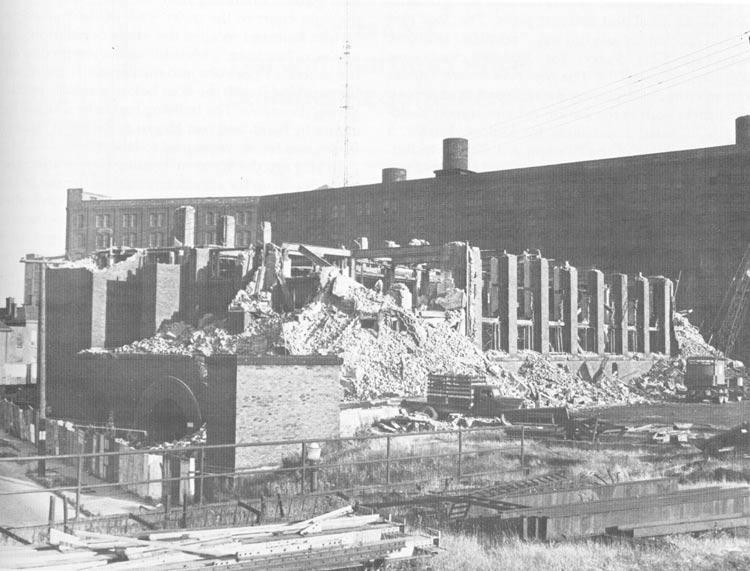
Demolition viewed from the Swan Street side. The building pier, center left, survives today. Image source: TBHM
The Larkin Administration Building was an expensive demolition project. The floors were ten inches thick, supported by 24-inch steel girders. The Buffalo Evening News said the 44-year old building was "built to stand forever." Its demolition was slow and accomplished largely by manual labor. The concrete and brick rubble were used to fill in the Ohio Basin, creating what is now Father Conway Park. When it was completed five months later, only a single brick pier at the edge of the property remained as a reminder of had been.
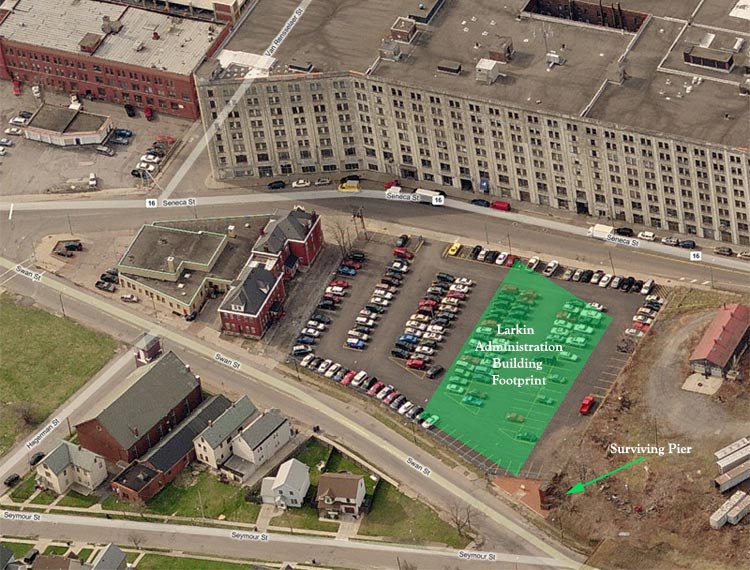
Bing aerial view. The green represents the footprint of the building and the location of the pier.
The Western Trading Corporation, which had purchased the building for $5,000 with the promise of new construction and the jobs that accompanied them, built nothing on the site of the former Larkin Administration Building. It has remained a parking lot for 60 years.
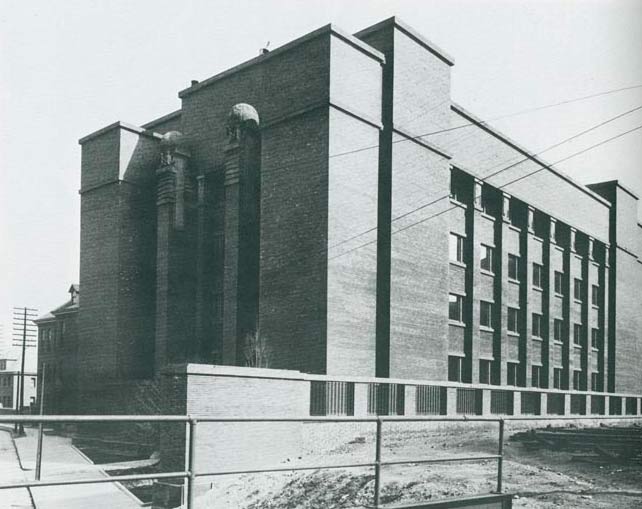
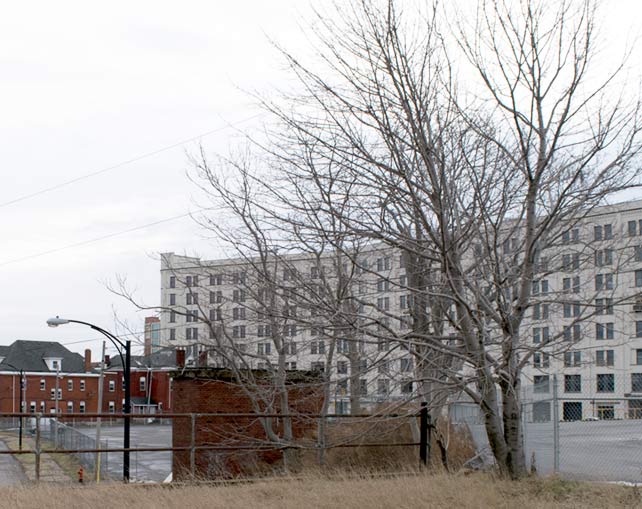
Pull the arrow tab left or right to view a comparison of the building when new and the site in 2016.
In 2006, volunteers from the Larkin Collectors Group and the Graycliff Conservancy joined to conserve the single pier at the edge of the property facing Swan Street and establish a pocket park with an interpretive panel for architectural tourists and Wright fans who visit Buffalo hoping to visit the site of the now-iconic Larkin Administration Building.
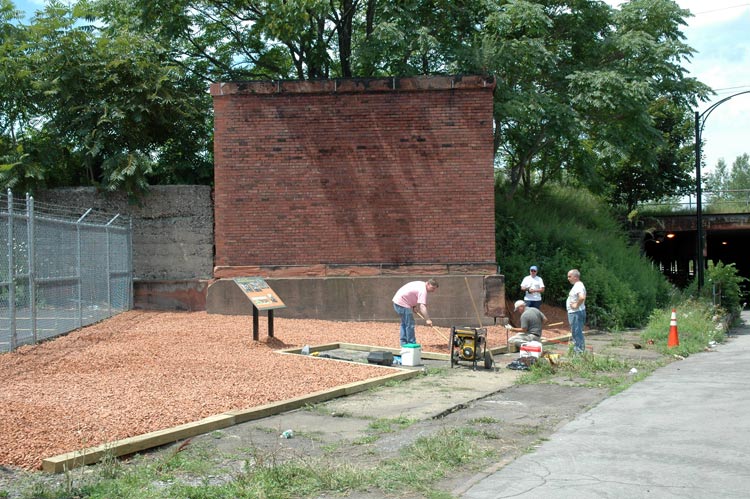
July 19, 2006, volunteers finishing the pocket park highlighting the Larkin Administration Building pier. Raking is Pat Mahoney, kneeling is Les Rickard, at right is Jerry Puma. (Identity of volunteer in the background not known.)